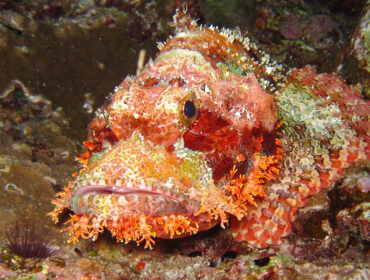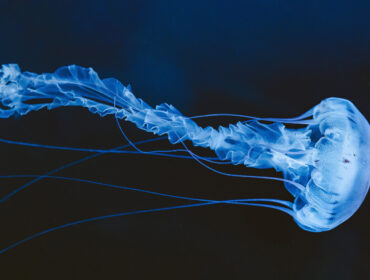The world’s oceans are full of fascinating, beautiful, and sometimes terrifying creatures, and some of the most impressive predators live within these vast blue regions. Although a healthy respect for any predator in nature is a good thing for everyone to have, some of the most frightening of these predators do not have a taste for human flesh, despite what the movies may show — but of course, there are always exceptions, as nature is a wild and primarily unpredictable force. Many of these creatures could be in the running for inclusion on the list of top ocean predators, but these five stand above the rest.
Orca (Killer Whale)
Like its name suggests, the killer whale, orca, is one of the ocean’s top predators. Orcas are a member of the dolphin family. Like dolphins, these whales prey on a wide variety of fish. Orcas will also eat larger prey, such as seals, walruses, seagulls, penguins, and even other types of whales. Orcas are often so determined to hunt that they will leap partly out of the water, onto land, to catch their prey.
Great White Shark
Great white sharks are perhaps the most well-known ocean predators. They can grow to 20 feet long and hunt near the coasts. They can be found all over the world. Great whites with long, sharp teeth and extremely strong jaws will eat nearly anything, including birds, turtles, seals, whales, dolphins, and fish. These sharks will often leap out of the water to catch their prey.
Barracuda
Another fierce ocean predator is the barracuda. These fish, which can grow up to nearly seven feet long, are sleek and streamlined. They surprise their prey by lying in wait, then burst out to chase it before using their sharp teeth to make the catch. Barracudas mainly eat different types of fish, but have been known to bite other large marine animals and humans.
Blue Marlin
Blue marlins are another fascinating marine predator. These fish can grow to more than 16 feet long, characterized by their angular dorsal fin and long, sword-like upper jaw, known as a bill. Blue marlins eat several fish, including tuna, white marlins, and mackerel, and will often hunt prey weighing over 100 pounds. Many scientists believe blue marlins use their bills to slash, spear, or stun their prey.
Torpedo Ray
To look at, a torpedo ray does not seem like much of a predator. However, these electric rays are very skilled at finding prey. Torpedo rays lie in wait in the sand. When prey passes by, they burst out, wrapping the prey in their body. A burst of electricity is then delivered. This shock stuns or kills the prey, making it simple for the ray to feed.




